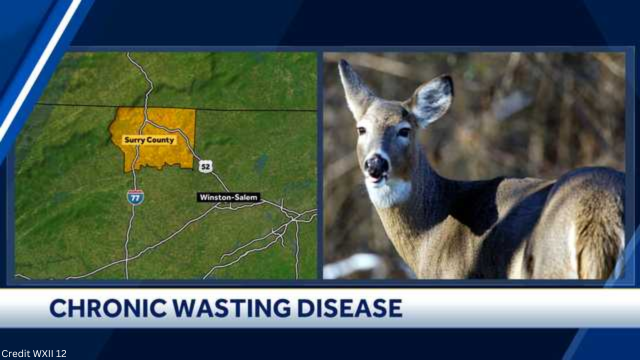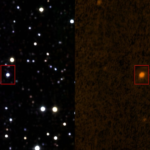From deer samples submitted since July 1, 2023, the North Carolina Wildlife Resources Commission has confirmed thirteen new cases of Chronic Wasting illness, also referred to as “zombie deer disease.”
Since the disease was initially discovered in Yadkin County in 2021, there have been 24 positive cases in North Carolina overall.
These new cases aren’t always terrible news, according to the NCWRC. “Encouraged by how few CWD-positive deer we’ve found, given how many deer we’ve tested,” stated Wildlife Management Division Chief Brad Howard in a news release.
Describe CWD.
The brain, spinal cord, and numerous other tissues of farmed and wild deer, elk, and moose are all susceptible to Chronic Wasting Disease, a degenerative and deadly illness.
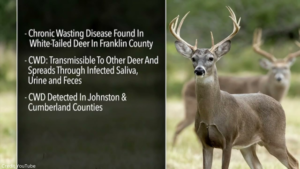
Transmissible spongiform encephalopathies, or prion diseases, are what the CDC refers to as CWD. Bovine spongiform encephalopathy, also known as “mad cow disease,” affects cattle, while scrapie affects sheep and goats.
According to the NCWRC, these things can spread CWD:
• Any material containing the brain, spinal cord, nerves, or lymph nodes;
• Live deer, particularly young fawns;
• Whole deer carcasses;
• Body fluids
They further request that citizens of North Carolina refrain from feeding wildlife since regular deer gatherings at feeding sites can raise the risk of CWD transmission. Go here to find out more about North Carolina’s CWD regulations.
In what way is wasting sickness in deer detectable? What characteristics do deer with CWD have?
Because of its unnerving accompanying symptoms, CWD has been dubbed “zombie deer disease.” These are the symptoms listed by the NCWRC:
• Being indifferent to their environment or displaying listlessness.
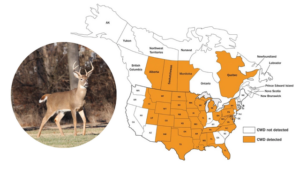
Insufficient synchronisation.
• Dropping the head frequently.
• Staring blankly.
• Adopting a routine while walking.
• Biting your teeth and drooling.
• Frequent urination and heavy water consumption.
• Minimal weight.
The illness has a lengthy incubation period, and symptoms may not appear for up to 16 months after infection. Despite the fact that symptoms do ultimately become evident, the NCWRC clarified that it is impossible to determine whether a deer has CWD without further testing.
Each year, the NCWRC monitors the existence of CWD in thousands of deer by doing CWD checks. 36,146 wild cervid samples were gathered last autumn, and after examining 98% of the samples, 13 positive results were found. The counties of Cumberland, Surry, Stokes, and Yadkin were the sites of the positive results, which were deer that had previously been shown to have CWD.
Can a person with CWD develop CWD? How does CWD translate into human terms?
There is a human TSE even if there haven’t been any cases of CWD reported. With its quickly manifesting dementia, Creutzfeldt-Jakob disease is frequently referred to as the human equivalent of mad cow disease.
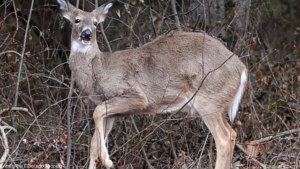
Read More Articles
FDA Recall Petition by Valisure for Products Including Benzene for Acne
Walmart customers may be eligible for a cash compensation; find out your rights here.
Muslim divorce often mention the cost of living.
Fatal but uncommon is CJD. The UK NHS enumerates potential symptoms, which may include irregular jerking movements, a progressive loss of brain function and mobility, alterations in personality, slurred speech, vision issues and blindness, loss of balance and coordination, and intellect and memory loss. After symptoms appear, CJD typically results in death within a year.
Furthermore, the CDC has emphasised that it is critical to prevent the agents of all known prion diseases from entering the human food chain, even though there have been no documented cases of CWD infection in people.
Can people who have CWD eat deer?
Although no cases of CWD infection in humans have been documented, the CDC also stated that certain animal research suggest it may be dangerous to other primates; this is just one more justification for why it is crucial to prevent any agents of prion diseases from getting into our food chain.
Because of this, the NCWRC advises against eating the following foods: meat from sick-looking deer; brain, eyes, spinal cord, spleen, tonsils, and lymph nodes.
Any animal meat from a test-positive case of CWD.
The NC Wildlife Resources Council advises leaving a deer at the scene of death if you witness or harvest one showing symptoms of illness and calling the NC Wildlife Helpline at 1-866-318-2401 or your local District Biologist. The NCWRC offers testing services for harvested deer as well.
Go to the NCWRC website for additional details.
For the Asheville Citizen Times, a USA TODAY Network member, Iris Seaton covers trending news stories. She may be contacted at iseaton@citizentimes.com.
Originally published by Asheville Citizen Times, this article NC: Chronic wasting disease (CWD) found in deer
